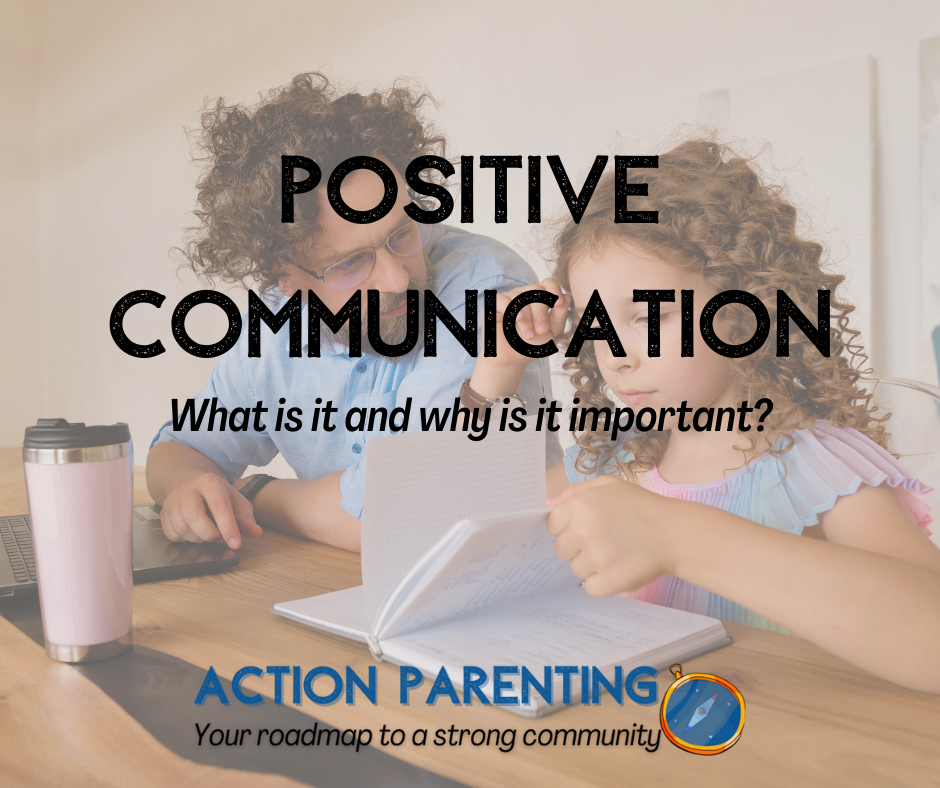Positive communication with children is foundational in both social and emotional development. Words hold power. As parents and educators, the words we use with our children become the words and voices they hear in their heads. The words help formulate the story from which they interpret the world and view themselves.
Angry and frustrated words can create a story that life is full of challenge and strife. Positive and patient words can create a story of safety and belonging. By being conscious of the words we are using, we can more intentionally create stories of safety and belonging. Using positive communication helps in other areas. It lays the foundation for better social and academic skills, improved relationships with peers and adults, and helps strengthen emotional regulation.

What is Positive Communication?
Positive communication with children is focusing on communicating emotions, needs, wants, and boundaries in positive ways. This does not mean that we don’t have feelings of frustration, aggravation, or annoyance but that we can communicate those feelings in positive ways. Positive communication focuses on the relationship and maintaining connection with the child. The emphasis is less on the result/behavior and more focused on the motivation and relationship.
Why is Positive Communication Important?
Children learn through modelling. They are watching and taking in not only our communication patterns and styles with them, but also how we communicate with our partner, family members, friends, co-workers, and even strangers. They internalize this and begin to model their own behavior after our behavior.
Positive communication is also important because it is more effective. Kids actually hear what we are saying. And they are most likely tuned into the last words. If I say “Don’t run!” A child hears: run! Instead, state what you want them to do. In this case the command “walk” communicates exactly what you want the child to do.
How do I know if my communication is positive?
A great place to start is with a check-in. Use the following statements to evaluate how communication is going in your relationships.
- When we finish a conversation/interaction, I feel good about myself.
- When we finish a conversation/interaction, my child feels good about themselves.
- Most of the time I feel connected and confident in our relationship.
- Most of the time I feel heard the first time I communicate with my child.
If you answered yes to these questions, you most likely are using a lot of positive communication patterns already. If you answered no, you are taking the first step towards more positive communication. The first step is recognizing the unhealthy communication patterns.
For the next week, notice when you feel frustrated or unheard as you communicate with your child. Watch for patterns or notice phrases you are using. Becoming aware of the unhealthy patterns helps you identify the places to start.
Once you have identified the unhealthy patterns, pick one and consider more positive alternatives. A helpful hint is to consider saying exactly what you want your child to do rather than what you want them to stop doing.
Want more? Our online parenting class “Big Emotions and What Parents Can Do” has important learning about the brain and emotions as well as helpful tips and tools for parents to bring more peace and calm to their homes.
Stay connected and get more tools and tips around positive communication on our Facebook Group.

